To provide context, a brief historical base is necessary before delving directly into the importance and beauty of the “Bird Island” nature reserve, a biological Pearl of Valdes Peninsula that rests, embraced on all sides by the magnificent Golfo San JoseChubut has been a pioneering province with respect to conservation in Argentina thanks to a group of people who saw the need to preserve its unique natural resources. The nature reserve at “Bird Island” (Isla de los Pajaros) was created in 1967 along with many different regions of Chubut that were identified in this time period as important areas to protect, establishing nature reserves that today are the bastions of Chubut’s protected areas.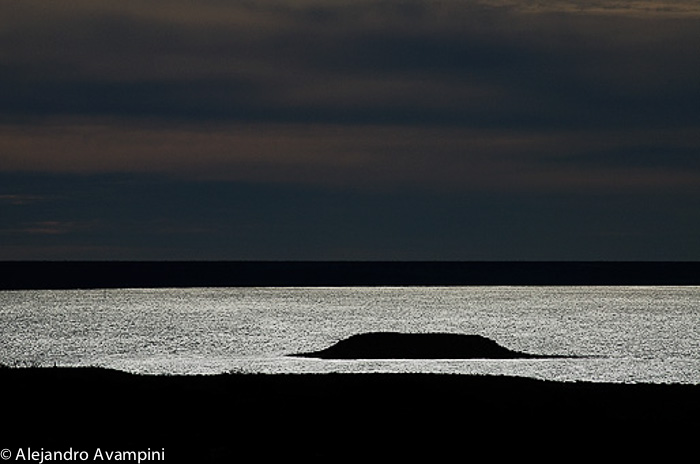
Bird Island is not an island!
The tidal shifts are so large in Golfo San Jose that when the tide goes out a spit of land connects the “island” to the continent. With low tide coming twice a day a person could walk across without even getting their ankles wet, tramp the island and return in a couple of hours. With high tide the spit is covered with water making it appear to be an inaccessible island once again, a geomorphological characteristic referred to as a Tombolo. The Bird Island Reserve is located on Route 2 after entering the Valdes Peninsula. A 7 km from the booths where you paid the entrance, there is a roundabout. The first access is to the Visitor Center. A museum can take a screenshot of the region and see an amazing and complete skeleton of southern right whale. By continuing the roundabout follow the route to Puerto Piramides, 28km later and the rest of the Valdes Peninsula. The third output is access, leading by a well maintained gravel road for 5km, to the Bird Island Reserve. If you continue the circle, the roundabout come back to Puerto Madryn, Trelew or Route 3.
The Bird Island Reserve is located on Route 2 after entering the Valdes Peninsula. A 7 km from the booths where you paid the entrance, there is a roundabout. The first access is to the Visitor Center. A museum can take a screenshot of the region and see an amazing and complete skeleton of southern right whale. By continuing the roundabout follow the route to Puerto Piramides, 28km later and the rest of the Valdes Peninsula. The third output is access, leading by a well maintained gravel road for 5km, to the Bird Island Reserve. If you continue the circle, the roundabout come back to Puerto Madryn, Trelew or Route 3.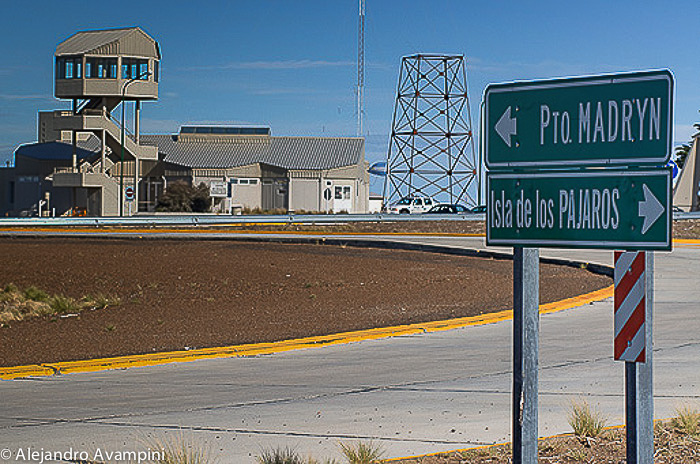 At the same place you’ll find the junction that leads to Bird Island, a reserve called because it is an important nesting area for migratory and non-migratory species. . We can say, however, that this isthmus has great biological value, because it is used as a breeding area for ten species of seabirds and shorebirds and others which also frequent it in smaller numbers. It is a very special place, perhaps even a bit mystical.
At the same place you’ll find the junction that leads to Bird Island, a reserve called because it is an important nesting area for migratory and non-migratory species. . We can say, however, that this isthmus has great biological value, because it is used as a breeding area for ten species of seabirds and shorebirds and others which also frequent it in smaller numbers. It is a very special place, perhaps even a bit mystical.  The best time of year for visiting this privileged appendage of the Valdes Peninsula, when the occupation and activity of various species of birds is at its highest, is from September through April. The early and visionary concept of conservation greatly favored the protection of Bird Island’s biodiversity from destruction and vandalism. Historically, as told by early visitors and residents of the Valdes Peninsula, “anyone could walk across to Bird Island where eggs were touched, moved, broken and removed…or the nesting birds were even shot at for sport”.
The best time of year for visiting this privileged appendage of the Valdes Peninsula, when the occupation and activity of various species of birds is at its highest, is from September through April. The early and visionary concept of conservation greatly favored the protection of Bird Island’s biodiversity from destruction and vandalism. Historically, as told by early visitors and residents of the Valdes Peninsula, “anyone could walk across to Bird Island where eggs were touched, moved, broken and removed…or the nesting birds were even shot at for sport”.
Today, access to Bird Island is strictly controlled and tourists can observe the island from just across the channel on the coast. With respect to people previously walking across to the island a question is created that will be quickly answered.
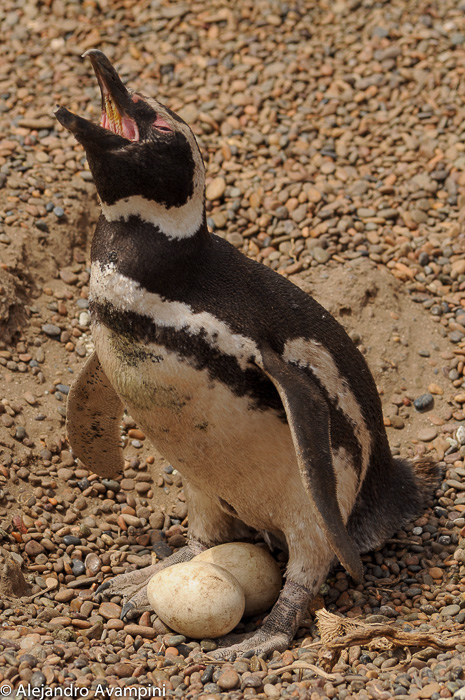
Following the circuit prepared for tourists at Bird Island an attractive new wooden walkway is reached with informative and educational signs and graphics. Stopping at one of the signs and reading the information while observing the island it becomes evident how its shape could have easily inspired Saint Exupery in the creation of his book “El Principito”. The drawing made in the first few pages of his book of the boa that swallowed an elephant is almost identical to the shape that is seen when observing the island from this perspective. From the wooden walkway an important and impressive panorama of Golfo San Jose and the geographic accidents that comprise its coastline are displayed. Looking west is Punta Gales (Welsh Point) and Punta Logaritmo (Logarithm Point), while the island occupies the field of vision in front looking almost due north, right next to a replica of the small chapel that existed in the San Jose Fort. With the clear skies that are frequent in these coordinates, the mouth of San Jose Gulf can be seen, with Punta Quiroga to the west and Punta Buenos Aires just 6.8km to the east. Between these two points marked by high cliffs and strong currents the enormous tidal shifts flow to and from Golfo San Matias. The unique natural characteristics make this portion of paradise worth a visit, aside from the array of birds that can be observed..
From the wooden walkway an important and impressive panorama of Golfo San Jose and the geographic accidents that comprise its coastline are displayed. Looking west is Punta Gales (Welsh Point) and Punta Logaritmo (Logarithm Point), while the island occupies the field of vision in front looking almost due north, right next to a replica of the small chapel that existed in the San Jose Fort. With the clear skies that are frequent in these coordinates, the mouth of San Jose Gulf can be seen, with Punta Quiroga to the west and Punta Buenos Aires just 6.8km to the east. Between these two points marked by high cliffs and strong currents the enormous tidal shifts flow to and from Golfo San Matias. The unique natural characteristics make this portion of paradise worth a visit, aside from the array of birds that can be observed.. 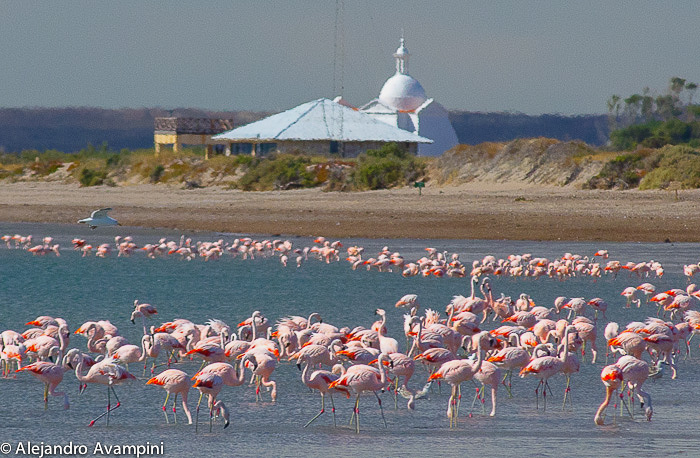 The reserve has a large fixed binocular, allowing visitors to move-in close to the activity while not disturbing or altering the bird’s reproductive behavior during their spring and summer residence.
The reserve has a large fixed binocular, allowing visitors to move-in close to the activity while not disturbing or altering the bird’s reproductive behavior during their spring and summer residence. The colour of their feathers are acquired by the food they eat, that’s why their offspring are born whitish and take on the intense pink colour from the small crustaceans, which form the major part of their diet.Flamingos are not resident in Valdes Peninsula area, however they nest in lakes in the Province of La Pampa.
The colour of their feathers are acquired by the food they eat, that’s why their offspring are born whitish and take on the intense pink colour from the small crustaceans, which form the major part of their diet.Flamingos are not resident in Valdes Peninsula area, however they nest in lakes in the Province of La Pampa.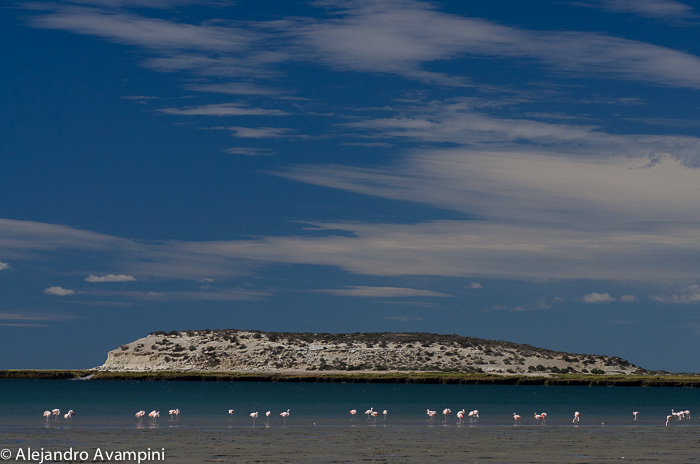 “The Valdes Peninsula is an extremely special place…” says Medina, a Park Ranger at Bird Island “…it is a huge maternity ward”, in reference to whales, sea lions, elephant seals, and dozens of species of birds that come each spring to mate, give birth and raise their offspring. Medina has worked from the start as a young, idealistic volunteer whose participation in a new concept around conservation and protection set the groundwork for what is now an established and necessary group of Park Rangers in the protected nature reserves of Chubut. Also living and working as Park Rangers in the reserve at Bird Island are Montero and Garcia Vera, both having dedicated decades of their lives assisting and educating tourists while protecting this special site.
“The Valdes Peninsula is an extremely special place…” says Medina, a Park Ranger at Bird Island “…it is a huge maternity ward”, in reference to whales, sea lions, elephant seals, and dozens of species of birds that come each spring to mate, give birth and raise their offspring. Medina has worked from the start as a young, idealistic volunteer whose participation in a new concept around conservation and protection set the groundwork for what is now an established and necessary group of Park Rangers in the protected nature reserves of Chubut. Also living and working as Park Rangers in the reserve at Bird Island are Montero and Garcia Vera, both having dedicated decades of their lives assisting and educating tourists while protecting this special site. The different species of birds that nest and reproduce on Bird Island include the Great Egret (Egretta alba), Black Crowned Night Heron (Nycticorax nycticorax), Kelp gull (Larus dominicanus), Rock Cormorant (Phalacrocorax magellanicus), Neotropic Cormorant (Phalacrocorax olivaceus), Chubut Steamer Duck (Tachyeres leucocephalus), several species of Terns (Sternas) and some Megallanic Penguins (Spheniscus magellanicus). Other birds that can occasionally be observed in the area or on the island include Brown-hooded gull (Larus maculipennis), Southern Giant Petrel (Macronectes giganteus) and Chilean Flamingos (Phoenicopterus chilensis), amongst others.
The different species of birds that nest and reproduce on Bird Island include the Great Egret (Egretta alba), Black Crowned Night Heron (Nycticorax nycticorax), Kelp gull (Larus dominicanus), Rock Cormorant (Phalacrocorax magellanicus), Neotropic Cormorant (Phalacrocorax olivaceus), Chubut Steamer Duck (Tachyeres leucocephalus), several species of Terns (Sternas) and some Megallanic Penguins (Spheniscus magellanicus). Other birds that can occasionally be observed in the area or on the island include Brown-hooded gull (Larus maculipennis), Southern Giant Petrel (Macronectes giganteus) and Chilean Flamingos (Phoenicopterus chilensis), amongst others.
Great Egret

This elegant bird, was on the verge of extinction by early 1900. The cause of this destruction was the prevailing fashion amongst women for “aigrettes”, which were made from the breeding plumage of the male bird. The spectacular nature of these feathers gave them great value and hunters pursued the bird tenaciously without any control and without respecting the breeding season. Finally, at the last moment, laws began to be applied to protect our wildlife. In this way the beautiful white egret survived and in recent years they have more numerous but are still rare.
Neotropic Cormorant
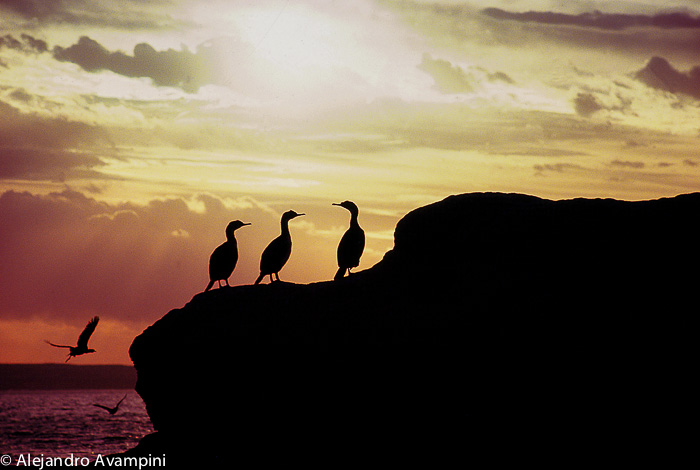 It is frequently seen flying swiftly, striking the water with a straight and accurate flight, and occasionally touching the surface with the tip of the wings. This species is primarily piscivorous. However, these observations suggest that, unlike the King cormorant and the Rock shag, the diet of this species is characterized by a high proportion of fish moving in schools and near the surface such as the smelt and bottom fish as bass. In marine environments, this cormorant has been observed feeding both individually and in flocks. It feeds mainly in shallow coastal waters (less than 1.3 km and not more than 10 m depth). After diving in search of food, it is common to see it with spread wings to the sun on a branch, drying off. The neotropic cormorant builds nests with branches cemented with their own guano.
It is frequently seen flying swiftly, striking the water with a straight and accurate flight, and occasionally touching the surface with the tip of the wings. This species is primarily piscivorous. However, these observations suggest that, unlike the King cormorant and the Rock shag, the diet of this species is characterized by a high proportion of fish moving in schools and near the surface such as the smelt and bottom fish as bass. In marine environments, this cormorant has been observed feeding both individually and in flocks. It feeds mainly in shallow coastal waters (less than 1.3 km and not more than 10 m depth). After diving in search of food, it is common to see it with spread wings to the sun on a branch, drying off. The neotropic cormorant builds nests with branches cemented with their own guano.
A historical record of the colonization of Patagonia
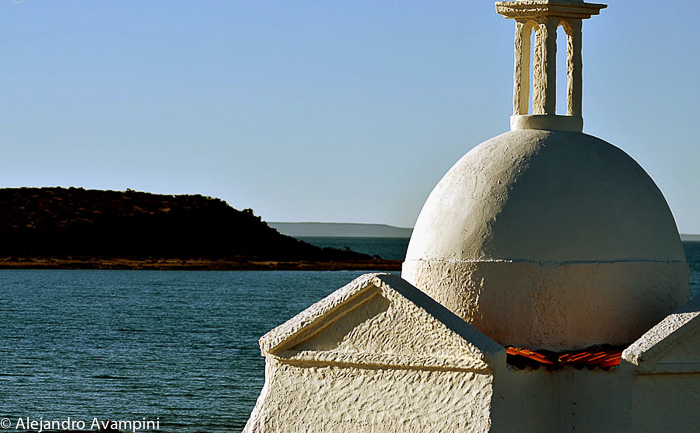 This image represents just one small corner of Patagonia, a landscape illuminated by the warm glow of sunset reflected upon the small chapel at Bird Island, a replica of the one that stood at the San Jose fort in an early attempt at Spanish colonization. Isolated and alone, set to one side of the visitor’s center, its construction brings to life time long past and refreshes our collective memory.
This image represents just one small corner of Patagonia, a landscape illuminated by the warm glow of sunset reflected upon the small chapel at Bird Island, a replica of the one that stood at the San Jose fort in an early attempt at Spanish colonization. Isolated and alone, set to one side of the visitor’s center, its construction brings to life time long past and refreshes our collective memory.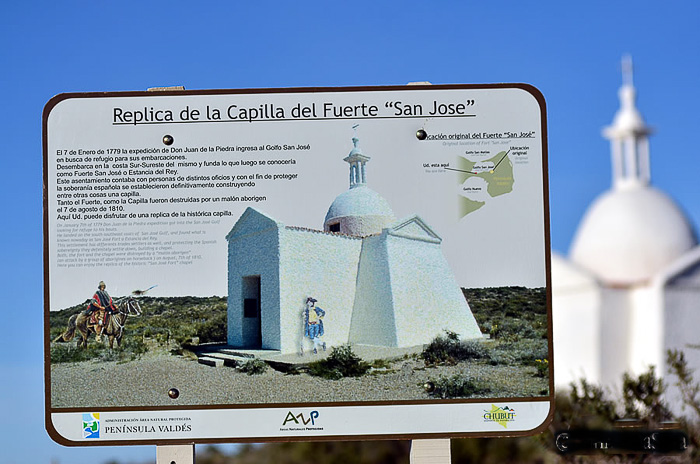 For those with a deeper interest in this colonial history I have attached (spanish) a study made by Jimena Alberti on the archeological history of the Valdes Peninsula entitled The First Historical and Archeological Analysis of the San Jose Fort (1779-1810). This a professional and very complete study reduced to a 43 page file. For those interested in a more concise version I have included here a series of historical anecdotes of the peninsulas past. The beginning of European presence in the area dates back to the 26th of February 1553, when a Spanish expedition led by Simon de Alcazaba and the two ships “Madres de Dios” y “San Pedro” touched land near the present day town of Camarones, and on the 9th of March of the same year the area was given the name Nueva Leon. During the inland exploration of this same expedition the rivers Chico and Chubut were discovered, hundreds of km from the Valdes Peninsula. As more ships ventured this coast carrying supplies or searching for resources, it was only a matter of time before the protected waters of Golfo San Jose and Golfo Nuevo were explored. This is exactly what happened some two hundred years after touching land near Camarones. On the 7th of January 1779 the first Spanish colonizers rowed to shore at what is now called Villarino Beach, Golfo San Jose, Valdes Peninsula.
For those with a deeper interest in this colonial history I have attached (spanish) a study made by Jimena Alberti on the archeological history of the Valdes Peninsula entitled The First Historical and Archeological Analysis of the San Jose Fort (1779-1810). This a professional and very complete study reduced to a 43 page file. For those interested in a more concise version I have included here a series of historical anecdotes of the peninsulas past. The beginning of European presence in the area dates back to the 26th of February 1553, when a Spanish expedition led by Simon de Alcazaba and the two ships “Madres de Dios” y “San Pedro” touched land near the present day town of Camarones, and on the 9th of March of the same year the area was given the name Nueva Leon. During the inland exploration of this same expedition the rivers Chico and Chubut were discovered, hundreds of km from the Valdes Peninsula. As more ships ventured this coast carrying supplies or searching for resources, it was only a matter of time before the protected waters of Golfo San Jose and Golfo Nuevo were explored. This is exactly what happened some two hundred years after touching land near Camarones. On the 7th of January 1779 the first Spanish colonizers rowed to shore at what is now called Villarino Beach, Golfo San Jose, Valdes Peninsula.
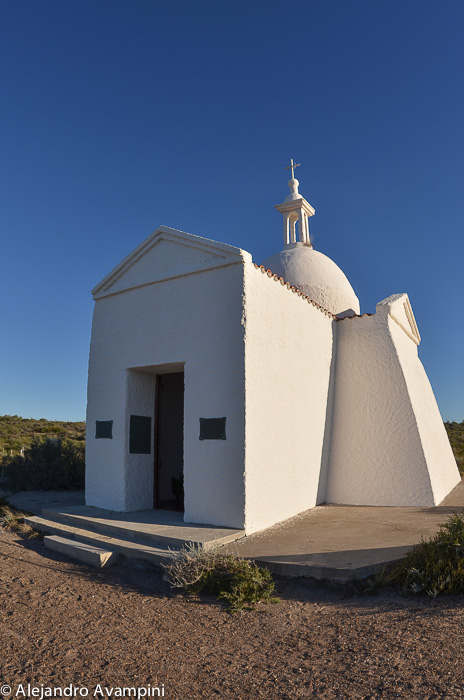
Don Juan de la Piedra, at the helm of the sailing vessel Nuestra Senora del Carmen and while commanding a fleet of ships, including the Santa Teresa and Nuestra Senora de Oliveyra, decided to enter Golfo San Jose in search of refuge from the rough seas of opean ocean that are common at these latitudes. Their landing was made along the South-Southeast coast of the Golfo San Jose and founded what would be known as the San Jose Fort or Kings Ranch. The ships pilot, Genral Don Basilio Villarino, discovered fresh water springs close to the landing site, a place that would later be named Don Basilio in his honor. Thanks to drinkable water from this spring and through an arduous process of work and sacrifice they were able to establish small shelters and gardens with irrigation channels.
The ships pilot, Genral Don Basilio Villarino, discovered fresh water springs close to the landing site, a place that would later be named Don Basilio in his honor. Thanks to drinkable water from this spring and through an arduous process of work and sacrifice they were able to establish small shelters and gardens with irrigation channels.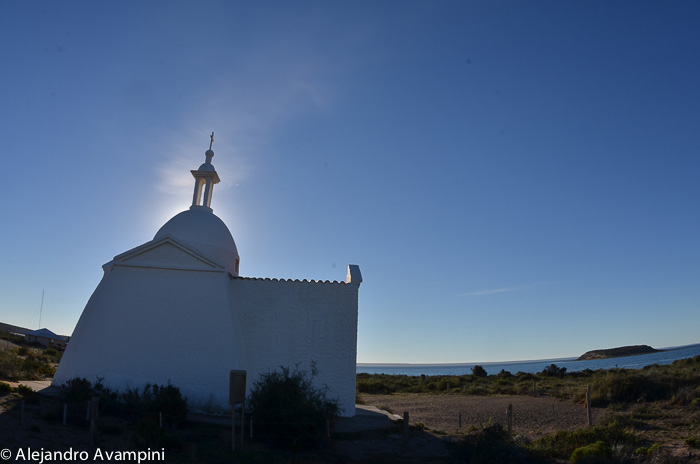 With the objective of establishing a fixed colony and thereby expanding and protecting Spanish sovereignty individuals of various professions and abilities constructed, amongst other buildings, a small chapel. The chapel that can be visited at Bird Island is a replica some 30km from the original site where the small fortress La Candelaria once existed.
With the objective of establishing a fixed colony and thereby expanding and protecting Spanish sovereignty individuals of various professions and abilities constructed, amongst other buildings, a small chapel. The chapel that can be visited at Bird Island is a replica some 30km from the original site where the small fortress La Candelaria once existed.
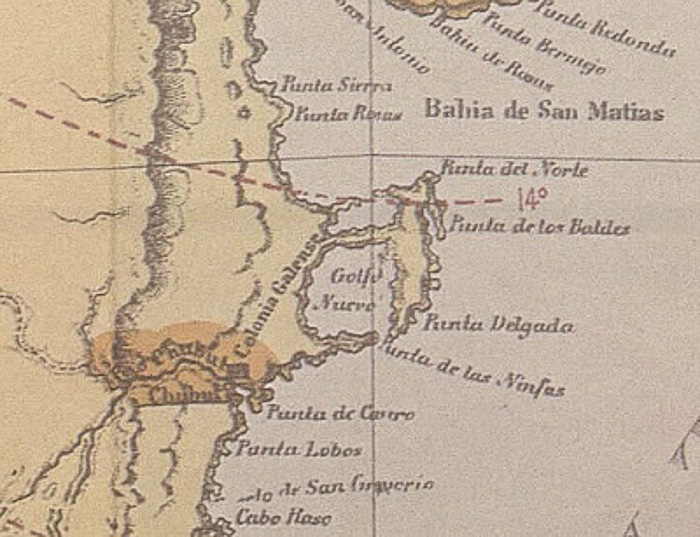 According to documents recorded months later at Fort Rio Negro, by survivors, it is told that on the 8th of August 1810, the colony at Fort San Jose was attacked by an indigenous mob of Tehuelches, led by the Chiefs Colchecan Cossuna, Tanana, Zenchil, Salu and others. The attack completely destroyed the colony and its installations, including the fortress and chapel. The unofficial story is that this violent attack, where only a few were allowed to survive to tell the tale after 30 years of mutual occupation, was probably the product of poor treatment by the colonizers. Today, Villarino beach is easily accessible by land, resting along a lonely coast lost in the great expanse of its surroundings and with no visible evidence of this colonial history. Aside from the reasons for the indigenous intolerance of the white man, it is easy for any visitor to Bird Island, together with a little bit of imagination, to travel back in time and get a feel for the harsh, distant and isolated conditions that the first colonist had to endure along the Patagonian Coast.
According to documents recorded months later at Fort Rio Negro, by survivors, it is told that on the 8th of August 1810, the colony at Fort San Jose was attacked by an indigenous mob of Tehuelches, led by the Chiefs Colchecan Cossuna, Tanana, Zenchil, Salu and others. The attack completely destroyed the colony and its installations, including the fortress and chapel. The unofficial story is that this violent attack, where only a few were allowed to survive to tell the tale after 30 years of mutual occupation, was probably the product of poor treatment by the colonizers. Today, Villarino beach is easily accessible by land, resting along a lonely coast lost in the great expanse of its surroundings and with no visible evidence of this colonial history. Aside from the reasons for the indigenous intolerance of the white man, it is easy for any visitor to Bird Island, together with a little bit of imagination, to travel back in time and get a feel for the harsh, distant and isolated conditions that the first colonist had to endure along the Patagonian Coast.




